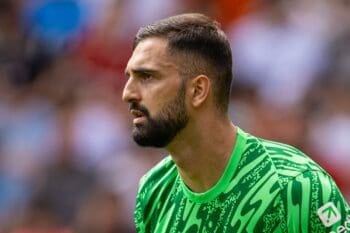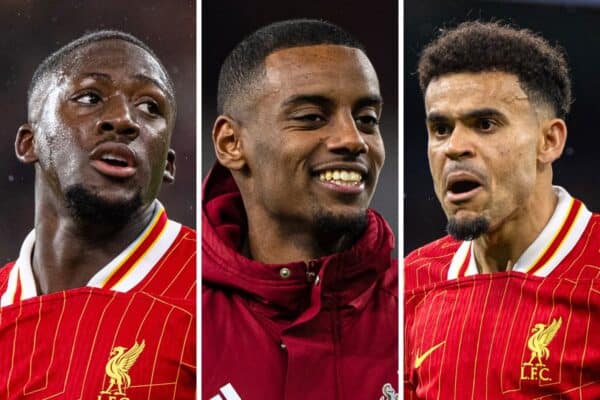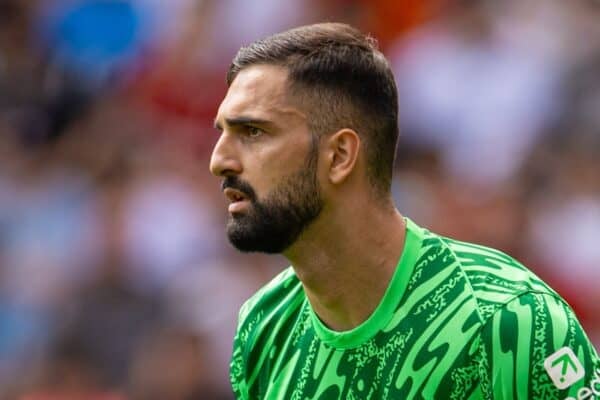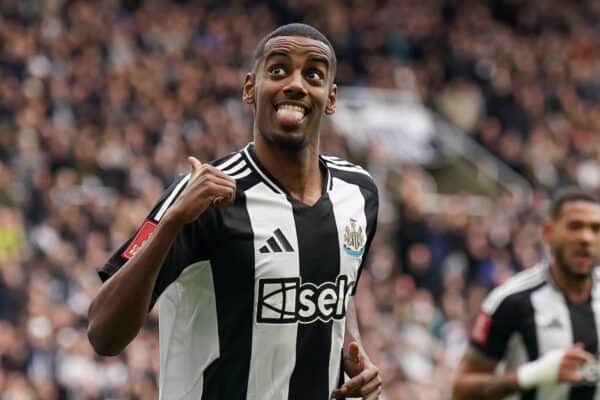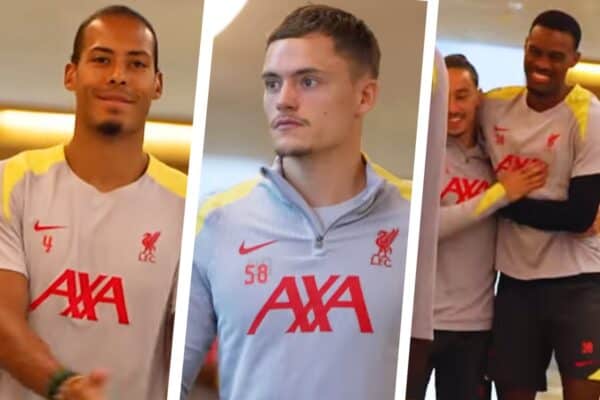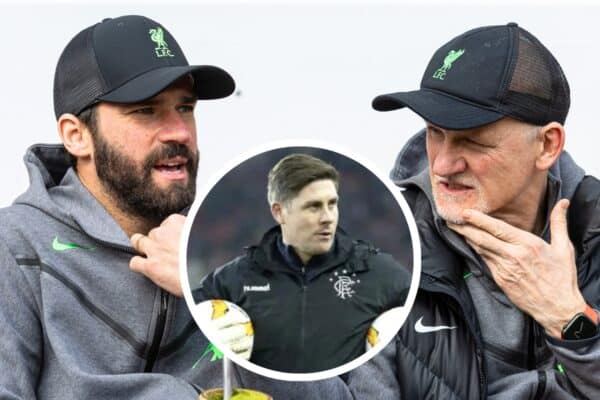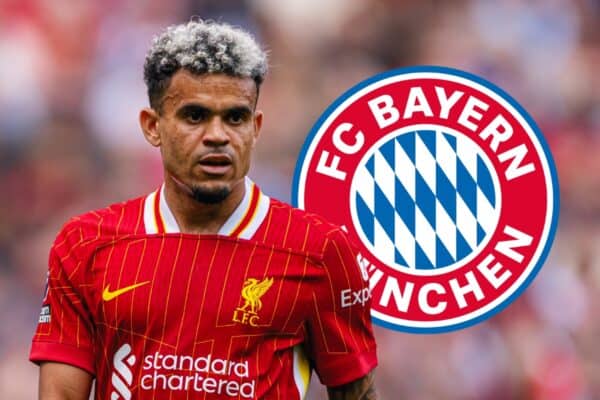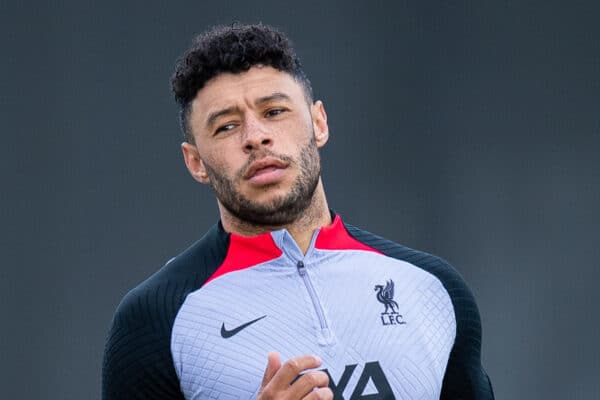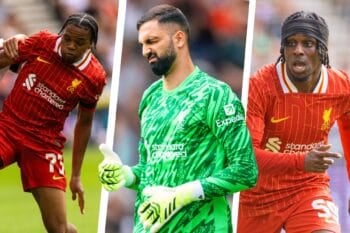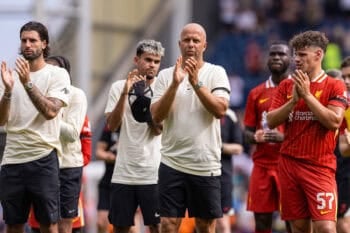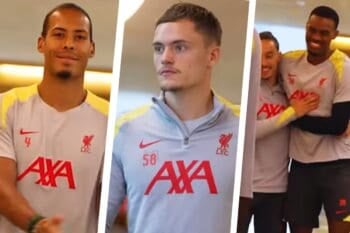Our record transfer fee was shattered a few weeks ago with the signing of Fernando Torres, for somewhere in the region of £20m. Our previous record was £14m for Djibril Cissé in the summer of 2004, which in turn was much higher than the record figure before that. Those numbers are so large that it’s hard to believe that a little over thirty years ago it was unheard of for any player to be transferred for a fee of anywhere close to £1m.
In fact, going back forty years to June of 1967, Tony Hately was signed from Chelsea for a staggering (at the time) sum of £96,000. That’s as much as some Premier League players are now earning per week! Only a year after that big money move, in September of 1968, Alun Evans became Britain’s most expensive teenager with a transfer from Wolves to Liverpool for an even more astonishing fee, and became the first Liverpool player to break the £100,000 barrier. Since then, we’ve had many more big money transfers, with the likes of Kenny Dalglish (£440,000 in 1977), Peter Beardsley (£1,900,000 in 1987), Dean Saunders (£2,900,000 in 1991), and Stan Collymore (£8,500,000 in 1995) all setting British transfer records.
Obviously there was a rapid (insane?) escalation in transfer fees from 1975 to 1995, so it isn’t fair to compare the fees paid for players that were signed twenty years apart. But, it should be fair to look at the fees paid during a shorter period and see how they compare. Going back to the 1970’s, the typical fee for a player such as John Toshack, who signed from Cardiff City in 1970, was £110,000. Later in the decade a player such as Graeme Souness was able to command a fee of £350,000 from Middlesbrough in 1978. The question that automatically arises now is, how did those transfer fees paid by Liverpool compare with those paid by other clubs for players during the same time period? A few examples will show that they were certainly not out of line.
Malcolm Macdonald moved from Luton to Newcastle in 1971 for a fee of £180,000, and then moved to Arsenal in 1976 for a fee of £333,000; Martin Peters transferred from West Ham to Spurs for £200,000 in 1970; Peter Osgood moved from Chelsea to Southampton in 1974 for a fee of £275,000; England goalkeeper Peter Shilton was valued at £250,000 for a move from Stoke City to Nottingham Forest in 1977; and last but not least in these examples is centre back Gordon McQueen’s move from Leeds United to Manchester United for a fee of £495,000 in 1978.
Any manager can spot a talented player who’s already established at another club, and it’s a given that such talent is going to be expensive for a manager to bring in. The difference between a good manager and a great manager is one who can spot talent in the making, or is otherwise hidden, and bring those players into the club at a much lower cost than the more proven but much more expensive players. It’s possible that with enough money, any manager can buy his way to success by simply identifying quality players and then bringing them in no matter what the cost (I’m trying hard not to think of anyone in particular here). It’s a completely different story for a manager with limited money, who has to spend wisely by looking for ‘œbargain’ players, who are ones that may not be at the highest level at the moment, but will be once they are brought in.
The main success of Liverpool in the transfer market during the 1960’s, ‘˜70’s, and ‘˜80’s was the ability to identify particular players who would be capable of fitting into The Liverpool Way, and with not so much regard to their current status. Many of those players were somewhat undervalued by their own club, and underrated by other clubs. Those were the ones who turned out to be bargain priced players that went on to greater glory once they joined the Reds.
The task for this Liverpool XI is to find a complete squad of bargain priced players, with a total budget of less than about £1m (or an average of £100,000 per player) and see what we can come up with. If we’re lucky, we’ll have a squad that will be competitive with other clubs of the same era. Of course, the best period to begin the search is going to be the late 1960’s to late 1970’s, with transfer fees for top players typically (as shown above) well above £200,000 ‘“ i.e. double my budget here.
 The first bargain to look for is any player who comes in with no transfer fee. Two of those players that I’ll select are Tommy Smith and Ian Callaghan. Both of these two came directly into the club through the apprenticeship system, in the days long before the Academy was in place. That gives me two players to begin with, and no cost to my transfer budget. The next best thing to free is to look for relatively unknown talent that may be available locally, which I can find with Steve Heighway playing amateur for Skelmersdale and Jimmy Case with South Liverpool. The two together wouldn’t even cost me my average per player figure of £100,000, and I’ve already signed up four players to my final XI.
The first bargain to look for is any player who comes in with no transfer fee. Two of those players that I’ll select are Tommy Smith and Ian Callaghan. Both of these two came directly into the club through the apprenticeship system, in the days long before the Academy was in place. That gives me two players to begin with, and no cost to my transfer budget. The next best thing to free is to look for relatively unknown talent that may be available locally, which I can find with Steve Heighway playing amateur for Skelmersdale and Jimmy Case with South Liverpool. The two together wouldn’t even cost me my average per player figure of £100,000, and I’ve already signed up four players to my final XI.
I should look for a goalkeeper next, and for this I’m going to take the bargain deal of the 20th century and sign Ray Clemence for £18,000 (from Scunthorpe in 1967). Next, I’ll stay with Scunthorpe for a while, and in 1971 I’ll sign Kevin Keegan for £35,000. I doubt that those two bargains will ever be beaten, but let’s keep looking. Emlyn Hughes cost £65,000 from Blackpool in 1967, and that’s probably the end of players available at less than £100,000. Or is it? Phil Neal is yet another incredible bargain at £66,000 from Northampton in 1974, and I’ll complete the back line with Joey Jones as the first to go over my average figure at a cost of £110,000 from Wrexham in 1975. For the same price, I’ll bring in John Toshack from Cardiff (£110,000 in 1970) to partner Keegan up front.
Inevitably I’m going to have to start spending some big money somewhere, but if that’s the case then at least it should be done as wisely as possible. Local lad Terry McDermott can be signed from Newcastle in 1974 for £180,000, and Ray Kennedy is available for the same price from Arsenal, also in 1974.
As always, I’ll have to think about a few players to add in to make up a sizeable squad, so with the same strategy I’ll add local lads Phil Thompson and David Fairclough, who came in as youngsters with no transfer fees. Then, with an eye for more bargains I’ll bring in Alec Lindsay who signed from Bury for £67,000 in 1969. I’ll also put a couple of youngsters on the bench with striker Alan Waddle who transferred from Halifax at age 20 for a fee of £40,000, and reserve goalkeeper Peter McDonnell who signed from Bury in 1974. That should give me a pretty good squad to work with, so now I’ll select my starting eleven, as follows:
Ray Clemence
Phil Neal
Tommy Smith
Emlyn Hughes
Joey Jones
Jimmy Case
Ray Kennedy
Ian Callaghan
Terry McDermott
Steve Heighway
Kevin Keegan
The total transfer fees paid for this eleven is less than £700,000! The astute reader may have seen this eleven coming for some time since I began rambling on about all of the above players, since this is precisely the eleven that won Liverpool’s first European Cup in 1977. If we add the five who were on the bench (David Fairclough, Alec Lindsay, David Johnson, Alan Waddle, and Peter McDonnell) we surprisingly add a little over £300,000 with David Johnson taking two thirds of that total when he signed a year earlier for £200,000 from Ipswich. Still, it makes it possible to put together a squad capable of winning the European Cup for less than £1m, or an average of less than £100,000 when typical transfers for top players were commanding more than twice as much. If we then add in John Toshack and Phil Thompson, for an additional transfer cost of £110,000, then we have the squad that also won the League that same season as well as narrowly missing out on winning the FA Cup. And if that doesn’t show the genius of both Shankly and Paisley, then I don’t know what will.
Keith Perkins


